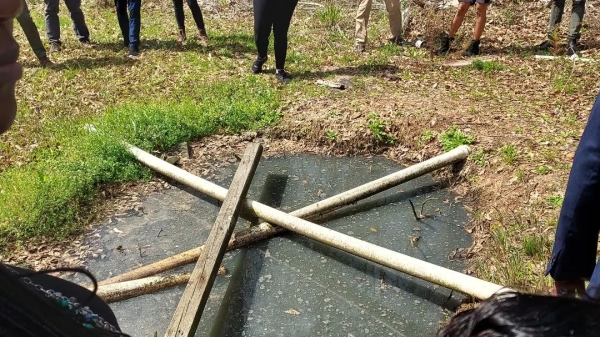During her first State of the State address nearly a year ago, Gov. Kay Ivey staked her ground on workforce development, job creation and education under her Strong Start, Strong Finish plan, which, if successful, will transform the state’s education and labor opportunities.
If Ivey succeeds, her legacy as one of the state’s most consequential governors will be secure.
Aiding her in this monumental undertaking is Enterprise native Nick Moore who heads The Governor’s Office of Education and Workforce Transformation (GOEWT) which is charged with implementing the Governor’s strategic workforce development plan.
Moore, a dedicated policy wonk, understands the intricacy of both the federal level programs and the state agencies that must execute Ivey’s strategy. He also recognizes that every individual who is willing to put in the effort deserves a shot at success.
“Success should not be based on the color of your skin, your zip code or who your parents are but on individual merit,” says Moore. “As someone from a humble background, I understand it took people looking out for me and shepherding me that allows me to be where I am today.”
Moore, a Harvard University graduate, has a passion for policy that he hopes will assist Gov. Ivey. “If I’ve had any success in my life I want to be able to say I helped Gov. Ivey to ensure that other young people don’t have that level of uncertainty that comes with relying on the luck for a meaningful life,” he says.
In a sprawling hour-long interview, Moore took APR through the intricacies of Ivey’s strategy for Strong Start, Strong Finish: The Education-to-Workforce Pipeline.
Since her announcing of Strong Start, Strong Finish, a detailed, strategic plan has emerged to harness business and education interests for a comprehensive push that begins at the earliest stages of education and results in an educated workforce prepared for 21st Century jobs.
“Three main federal programs that provide nearly a billion dollars to Alabama from Kindergarten through workforce training are funding the plan,” said Moore.
Three federal laws – the Every Student Succeeds Act (ESSA), the Carl D. Perkins Career and Technical Education Act (Perkins V) and the Workforce Innovation and Opportunity Act (WIOA) – provide federal support for state education and workforce activities.
ESSA provides funding for public education from kindergarten to 12th grade. Perkins provides states funding to improve both secondary and postsecondary careers and technical education (CTE) programs. WIOA funds the public workforce development system for youth and adults looking for meaningful employment.
“Aligning those three bills so you can have an education to workforce pipeline is key,” said Moore. “Forging a unified system for students to engage in the various educational and career opportunities is the goal.”
Governor Ivey’s education-to-workforce pipeline begins with the basic blocking and tackling of education, literacy and numeracy. To this end, Moore says that the state’s Pre-K program will be available to all families that want their children to participate.
“It is essential that by third grade every student is literate and numerate,” says Moore. “These are the basics.” Next is career exploration and discovery which takes place during grades four through eight. Then students are ready to take advantage of the 16 career clusters and 79 career pathways that the state has identified working with employers and other stakeholders.
“We are looking at labor needs to focus on demand and opportunity,” which Moore says is part of the overall strategy. The state currently offers around 4,000 credential programs. “Part of the plan is to work with students and employers to determine which are the most valuable to the individual student,” says Moore.
“We are not trying to pigeon-hole a child,” said Moore. “But to allow them to focus on areas of interest so that they have every chance to succeed.”
Some of the state’s premier businesses have already invested money and resources into improving education, and Ivey’s teams are working with business entities to further the efforts of The Alabama Workforce Council (AWC) which is comprised of business executives from some of the state’s most important industries and organizations.
The Council’s goal, as stated in its mission statement, “is to facilitate collaboration between government and industry to help Alabama develop a sustainable, top-notch workforce that is competitive on a global scale.”
The Alabama Community College System under the leadership of Chancellor Jimmy H. Baker is engaged in a long-term strategy, as well, to provide the skills needed to fill the employment opportunities being created by government-private sector partnerships.
Moore says Gov. Ivey’s plan also is working to address the challenges of special populations, which include veterans, those recovering from substance abuse and those exiting prison. Moore said it also is there to help out-of-school youth, those who have been structurally disadvantaged or underemployed.
“Our labor force participation is at 57.3 percent. To get the number up to the national average is to focus on these special populations,” says Moore. The national labor force participation is at 62. 9 percent.
Moore says reaching these individuals is challenging but a fundamental task that must be accomplished.
Moore is tasked with building a coalition among 22 state agencies from Medicaid, the Department of Youth Services, Veteran Affairs and others to reach out to those who can take advantage of the various programs offered.
“All of these agencies talking, understanding the resources to help the individual help themselves by using what is already available to get what they need to succeed is essential,” says Moore.
A program, begun under Commerce Secretary Greg Canfield, is working to match skilled laborers with the employers that have jobs to offer and is currently underway.
A jobs portal, AlabamaWorks, is matching employers with job seekers. It also offers advice for students that are already interested in building a career.
AlabamaWorks, according to its website, “is a network of interconnected providers of workforce services, including all of the governmental, educational, and private sector components that train, prepare, and match job seekers with employers.”
“Broad outreach, integrating existing government agencies is vital,” says Moore.
Moore says Gov. Ivey and her team are committed to data-informed decisions which leads to data-driven policies.
Under Ivey’s direction, the days of merely throwing ideas against the wall and seeing what sticks are over. With Ivey’s plan, there are structures in place to make informed choices based on real-world information.
“For Alabamians to have career opportunities, they must be prepared when the right job comes along,” said Ivey at her first State of the State. “My education initiative, Strong Start, Strong Finish, does just that. Under Strong Start, Strong Finish, we will coordinate our efforts and bring all stakeholders to the table in order to improve education all the way from Pre-K to the workforce.” Moore says he is ready to assist the Governor to make that a reality.

















































